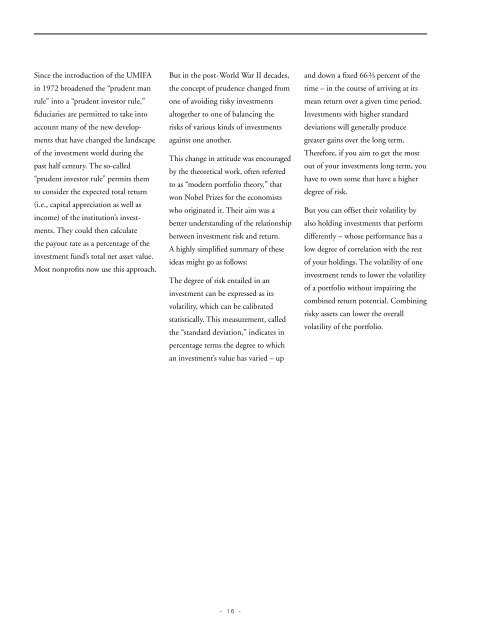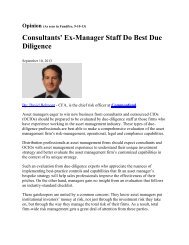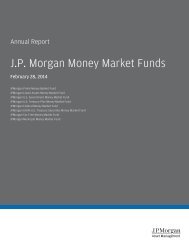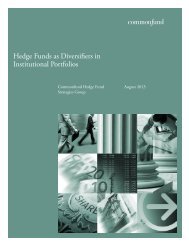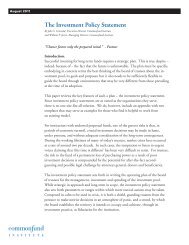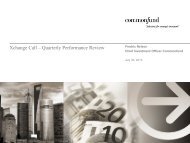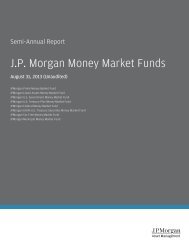Principles of Nonprofit Investment Management - Commonfund
Principles of Nonprofit Investment Management - Commonfund
Principles of Nonprofit Investment Management - Commonfund
You also want an ePaper? Increase the reach of your titles
YUMPU automatically turns print PDFs into web optimized ePapers that Google loves.
Since the introduction <strong>of</strong> the UMIFAin 1972 broadened the “prudent manrule” into a “prudent investor rule,”fiduciaries are permitted to take intoaccount many <strong>of</strong> the new developmentsthat have changed the landscape<strong>of</strong> the investment world during thepast half century. The so-called“prudent investor rule” permits themto consider the expected total return(i.e., capital appreciation as well asincome) <strong>of</strong> the institution’s investments.They could then calculatethe payout rate as a percentage <strong>of</strong> theinvestment fund’s total net asset value.Most nonpr<strong>of</strong>its now use this approach.But in the post-World War II decades,the concept <strong>of</strong> prudence changed fromone <strong>of</strong> avoiding risky investmentsaltogether to one <strong>of</strong> balancing therisks <strong>of</strong> various kinds <strong>of</strong> investmentsagainst one another.This change in attitude was encouragedby the theoretical work, <strong>of</strong>ten referredto as “modern portfolio theory,” thatwon Nobel Prizes for the economistswho originated it. Their aim was abetter understanding <strong>of</strong> the relationshipbetween investment risk and return.A highly simplified summary <strong>of</strong> theseideas might go as follows:The degree <strong>of</strong> risk entailed in aninvestment can be expressed as itsvolatility, which can be calibratedstatistically. This measurement, calledthe “standard deviation,” indicates inpercentage terms the degree to whichan investment’s value has varied – upand down a fixed 66⅔ percent <strong>of</strong> thetime – in the course <strong>of</strong> arriving at itsmean return over a given time period.<strong>Investment</strong>s with higher standarddeviations will generally producegreater gains over the long term.Therefore, if you aim to get the mostout <strong>of</strong> your investments long term, youhave to own some that have a higherdegree <strong>of</strong> risk.But you can <strong>of</strong>fset their volatility byalso holding investments that performdifferently – whose performance has alow degree <strong>of</strong> correlation with the rest<strong>of</strong> your holdings. The volatility <strong>of</strong> oneinvestment tends to lower the volatility<strong>of</strong> a portfolio without impairing thecombined return potential. Combiningrisky assets can lower the overallvolatility <strong>of</strong> the portfolio.- 16 -


